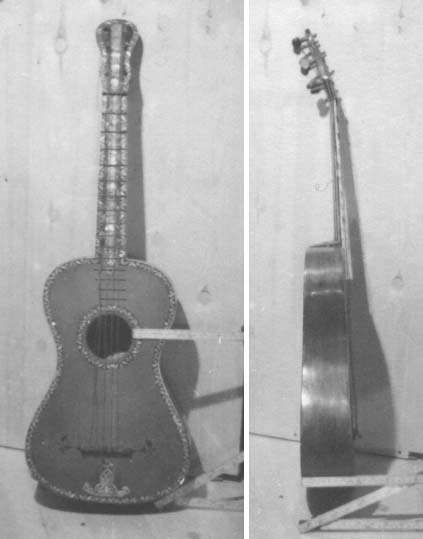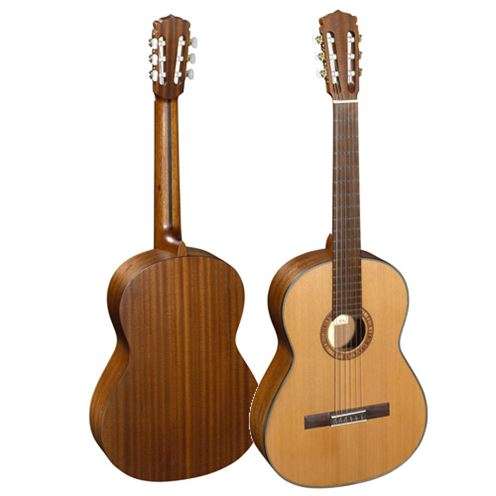
Guitar History
Contents
The guitar is the most popular musical instrument in the world. Today, not a single concert of live music can do without it. That is why we want to tell you about guitar history. It is good both as part of an orchestra, band or musical group, and in single exercises, where a musician can enjoy even playing alone with himself.
The instrument has been going to such glory for more than one century.
More about the guitar
In the broadest sense, any guitar is a chordophone, the sound is obtained as a result of vibrations of a string stretched between two points. Such products have been known since ancient times. They were already in the ancient Egyptian civilization and even earlier – in the agricultural Mediterranean cultures of the copper and bronze age. Guitar historians of musical instruments belong to the lute family, since it has not only a body, but also a fretboard , on which the strings are clamped with fingers.

History of the musical instrument
The forerunners of the guitar are plucked instruments, which at that time did not yet have a neck: cithara and zither. They were played in ancient Egypt and ancient Greece, and a little later in Rome. With the advent of a long narrow neck, the need for a solid resonator arose. Initially, it was made from hollow vessels and other voluminous objects: tortoise shell, dried pumpkin fruits, or hollowed-out wooden trunk pieces. A wooden case, composed of their upper and lower soundboards and sidewalls (shells), was invented in ancient China at the beginning of the 1st millennium AD.
From there, this idea migrated to the Arab countries, embodied in the Moorish guitar, and in the 8th-9th centuries it came to Europe.
Origin of the name

The guitar owes its name to the Latin language as generally accepted during the Middle Ages. The Greek word “cithara”, which few people in Europe could read after the collapse of the Western Roman Empire, as a result was transliterated into the Latin cithara. Over time, Latin also underwent changes – the word had the form quitaire, and in the Romano-Germanic languages \u200b\u200bit began to sound like a guitar.
Historically, stringed musical instruments have attracted the largest number of fans due to their simplicity and euphony. And it is the guitar that rightfully takes first place. For the first time, the guitar, in the usual sense, appeared in Spain, in the middle of the 6th century, it was the so-called Latin guitar. Historians claim that the origins of the classical guitar go to the Middle East, as a related instrument to the lute. The word “guitar” itself comes from the fusion of two ancient words: “sangita” – music and “tar” – string. The first documented references to this musical instrument under the name “guitar” appeared in the 13th century. And since then, a long musical evolution has begun, such a familiar instrument to us.
In Europe, until the end of the Renaissance, it was 4-string specimens that dominated among the guitars. The 5-string guitar first appeared in Italy around the same time. Similar guitars had from 8 to 10 frets. But in the process of development of guitar building, the number of frets used in playing increased to 10, and then to 12. However, six-string guitars appeared only in the 7th century, and only by the beginning of the 19th century did the guitar acquire its familiar form.
A variety of musical styles, different materials for construction and new technologies have led to a wide range of modern guitar types. For each style, there is a tool that meets the stated requirements. In the modern world, in view of such a variety of varieties of this instrument, it is not difficult to buy a guitar.
The first and probably the most common type of guitar is the classical one. It is not for nothing that such a guitar was called “classical”, because its appearance, layout and design remain unchanged after decades. Such a guitar has a wider neck, and, consequently, the distance between the strings, which allows you to most conveniently perform academic musical parts. The soft timbre of this instrument fits well into the overall orchestral scale, and the thickness of the neck allows you to work out the correct setting of the left hand when playing.
The next type of guitar is the acoustic guitar, or simply “acoustics”. In a row, in the world there is no person who at least once did not hold acoustics in his hands. This guitar is widely used among musicians of all genres – from metal to hip-hop. Such a prevalence of this type of guitar is due to the versatility and simplicity, volume and convenience of the instrument. This guitar combines excellent resonance and dynamics with convenience and multitasking. There are no restrictions for such a guitar – it can be used to perform bard songs around a campfire, perform at stadiums of many thousands, or compose an accompaniment for subsequent recording.
Electric guitar history
A large niche among all guitars is occupied by electric guitars. These include bass guitars. For the first time, a guitar of this type appeared on the wide market in 1931, designed by Adolf Rickenbacker. Electric guitars get their name from the way they produce sound – the vibrations of the strings are transmitted to magnets (called pickups), then to an amplifier, forming the final sound. This method opens up endless possibilities in using the guitar. From this day begins a long, filled with big names, the path of electric guitars.
Any musician knows such brands of electric guitars as ” Gibson ” and ” Fender “. It was these companies that set the general tone in guitar building, occupying high positions to this day. For over 60 years, Gibson has produced the Les Paul model, named after its designer. This model has a recognizable tone and is used in almost all genres, from blues to modern metal.
However, do not forget that with the development of guitars and equipment for them, new genres have appeared that require radically new technical solutions. The emergence of the popular rock and roll genre popularized electric guitars and established them as instruments capable of carving a powerful and punchy sound. Further, subdivided into genres, guitarists began to prefer separate models of electric guitars, as if setting the tone for the entire musical flow. For example, by the end of the 80s of the twentieth century, the so-called “metal guitars” appeared.

The metal guitar is characterized by a slim ergonomic neck, powerful electronics, strong woods and an aggressive design. Metal lead guitars are often equipped with special two-way tremolo systems to expand the player’s musical range. Also, for heavier genres, instruments with a non-standard number of strings are used – from 7 to 10. Regarding design, many manufacturers go to bold experiments, creating truly unique guitars that, with their appearance, already speak of the seriousness of intentions and the volume of the performer.
Interesting Facts about Guitar
- In the 1950s, Gibson employee Les Paul made a hybrid – an electric guitar with a hollow resonating body, which made it possible to play without electric current. The management was not interested in the idea, and the idea was given to the inventor Leo Fender.
- The correct posture for playing the classical guitar (for the right-handed person) is the back is straight, the left leg is on a special stand, the guitar lies with the bend of the body on the thigh of the left leg. The neck is raised up to 45 °. Known to most, the pose on the right knee with the bar parallel to the ground is considered non-academic, “yard”.
- Virtuoso guitarists, who often play in different styles and keys during the same song, sometimes use guitars with two or even three necks, each of which has different strings .
Guitar History in video








